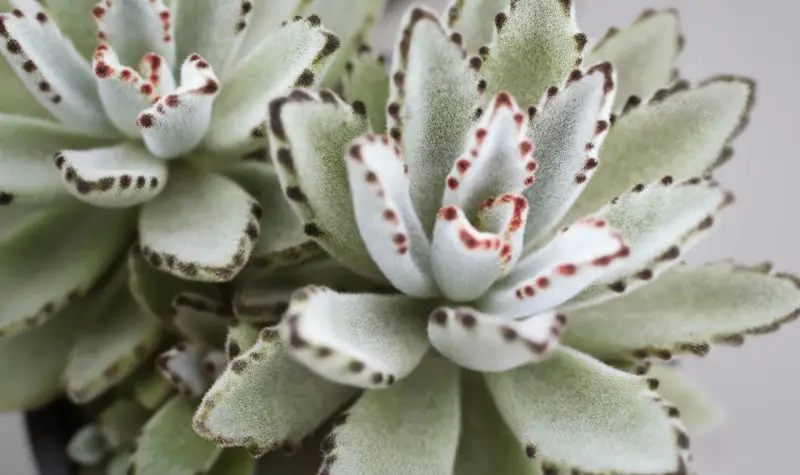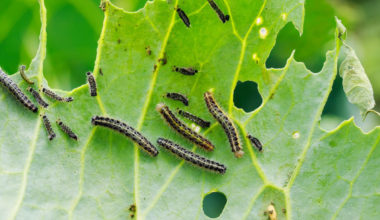Soft to the touch, highly textured and sometimes even fragrant, silky foliage appeals to all the senses. Often silvery, they create contrast in beds and borders, another reason to adopt them!
Contents
13 Velvet leaf plants
1. Velvetleaf Philodendron
The velvety, opalescent heart-shaped leaves of this plant come in a range of colors from bronze to dark green with pink and purple highlights on new growth.
2. Zebra Calathea
The beautiful foliage of this plant has dark to medium green patterns on the velvety surface that resemble the skin of a zebra. It blooms in spring and produces white and purple flowers.
3. Purple Passion
Purple passion offers an exquisite and attractive mix of velvety green leaves adorned with thick deep purple hairs. Its trailing habit makes it an ideal plant for hanging baskets.
4. White Velvet Plant
This succulent plant is one of the most attractive species of the genus “Tradescantia”. Its olive green to dull gray leaves have a purple tinge and silvery white spider web hairs that give the plant a silvery sheen. It also produces beautiful flowers!
5. Alocasia Black Velvet
The plant produces oval, heart-shaped velvety leaves with a black top and purple bottom. The light, almost silver-gray veins give the plant a stunning look.
6. African Violet
This plant’s gorgeous blue-purple, white and blue flowers add to the beauty of its velvety dark green leaves. This is one of the most beautiful velvet-leafed houseplants.
7. Ecuador Verrucosum
Philodendrons are also famous for cleaning the indoor air, and this beautiful variety offers deep emerald green velvety foliage with golden veins.
8. Jungle Velvet Calathea
Popular as ‘Jungle Velvet’, its bold and beautiful velvety leaves provide a striking look with its dark green hue and burgundy underside.
9. Philodendron Gigas
The dark, velvety foliage of this large-leafed plant makes it one of the best plants on this list! The leaves have a velvety feel and a dark green hue while the new growth appears copper colored with white veins.
10. Verbascum bombyciferum
Its large, soft, very white, woolly rosette leaves give rise the following year (White Broom is a biennial plant) to a very tall spike of golden yellow flowers, which give off a honey-like fragrance when touched. Liking well drained, even stony and very dry soils, the white broom will give more white and woolly leaves the more the summer will be dry and hot.
11. Sage, salvia officinalis
Sage forms small, round, soft cushions of mostly gray leaves. There are also variegated ones. In addition to being pleasant to caress and beautiful, sage is a medicinal plant rich in virtues. Like all aromatic plants, brushing its leaves brings out its fragrance.
It loves the sun, even if it can adapt to half-shade, and likes all types of soil, although it prefers well-drained soils. Other types of sage have downy foliage: silver sage, tricolor sage, golden sage.
12. Chocolate Soldier
‘Chocolate Soldier’ is admired for its narrow, velvety leaves with thick, dark chocolate brown edges. The leaves are very soft to the touch with a layer of hairs, giving it a fluffy appearance.
13. Stachys lanata or rabbit ears
This beautiful gray ground cover plant is soft to the eye and to the touch, a bit fluffy. In pots or in the ground, stachys can be planted in isolation or associated with plants that like to have cool feet, like clematis. They form pretty bushes up to 12 inches high with bunny-ear shaped leaves, hence the name! There are many varieties of stachys, some flowering, some dwarf varieties…
Why do these plants have velvet leaves?
Nature is well done: plants subjected to certain climatic phenomena find ways to adapt and sometimes in an incredible way. To protect themselves from too much sun or to survive in certain dry regions, the foliage has gradually changed.
Without going into the extreme example of cacti, plants with downy or hairy foliage have gradually covered themselves with a protection against the sun’s rays, also serving as very useful moisture collectors in times of drought.
Very often these plants have a silver color reflecting the light. Most of them appreciate full sun as well as well drained and sometimes poor and sandy grounds.









